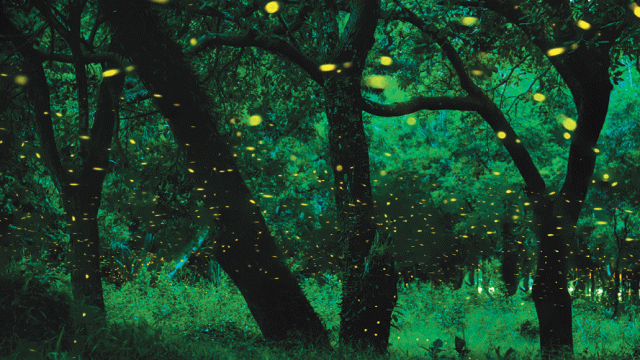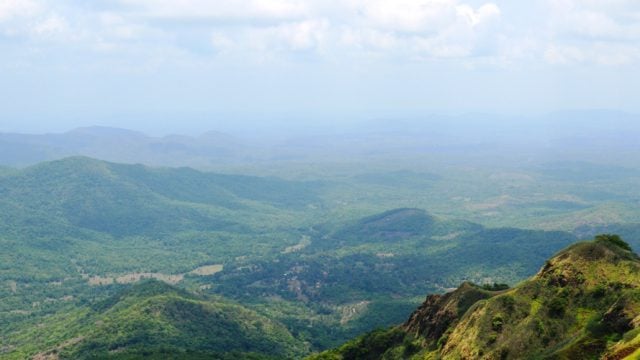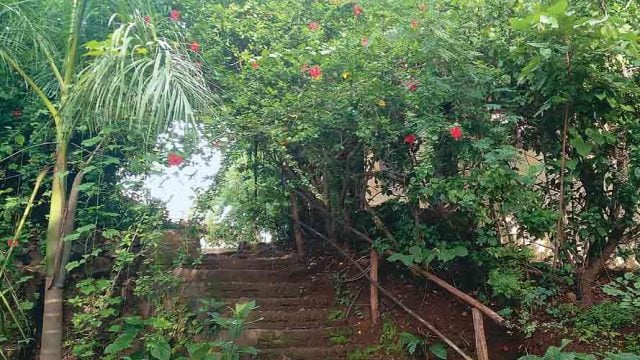This is the city Aurangzeb built in the dusk of an empire. This is the city to
Aurangzeb arrived towards the mid-17th century as Viceroy of the Deccan and turned it into Aurangabad. It’s a fairly clean city (your pictures will come out without any of that peculiar orange haze) and the Aurangabadis are courteous and polite. They make a point of their Nizami inheritance, so even touts and rickshaw drivers try to be pleasant. And it is the place from which you can visit two UNESCO World Heritage Sites, the rock-cut splendours of the temples at Ellora and the quiet beauty of the painted walls of Ajanta.
Things to See & Do
Aurangabad rose to great prominence under Mughal Emperor Aurangzeb, who gifted the city impressive walls and gates. The emperor also gave the city a Mughal feel, with a new citadel and a mausoleum for his wife. But for all its varied and rich history, and despite having attractions of its own, Aurangabad has been thrown into the shade by the undisputed brilliance of the wonders at Ajanta and Ellora.
Bibi ka Maqbara

Modelled on the Taj Mahal in Agra, built 25 years earlier, the Maqbara (built 1650-57) has been at the receiving end of criticism for its shoddy construction, flaking plaster and very little marble. Built by Prince Azam Shah in memory of his mother and Aurangzeb’s wife, Begum Rabia Daurani, this poor man’s Taj Mahal lacks the grandeur, scale and perfect proportions of the original. Its architects wanted it to rival the Taj Mahal, but fell short of funds (it cost ₹ 6,68,203). The comparative poverty of the finish is obvious. The lower 2metres of the mausoleum and 4 metres of the jaali (net) screens are constructed in marble, the rest in plaster.
The entrance to the tomb has a huge brass inlaid door with an inscription around its edges naming the maker. For all its flaws, the tomb is still an impressive structure and is floodlit at night. There’s a small State Museum close by. Bibi Ka Maqbara entry fee Indians ₹10, foreigners ₹200 Timings Sunrise to 8 pm, daily Cameras Still free, video ₹25. State Museum entry fee Adults ₹ 3, children Re ₹ Timings 10 am-5.30 pm, Mondays closed.
Paan Chakki

Near here is one of the sights that you can miss if you’re in a hurry. Located next to the Ghati Government Hospital near the central bus stand, the water driven mill was built in 1695 for Baba Shah Musafir, Aurangzeb’s favourite saint. It’s fed by a lake some 10 km away. If you hire a guide, he will get the water flowing and demonstrate the way in which flour was ground in days of yore. You can also feed the fish and watch the frenzy. Entry fee ₹5 Timings 6 am-9.30 pm.
The Aurangabad Caves
Though not half as spectacular as the ones in Ajanta and Ellora, the Aurangabad Caves provide a good introduction to rock-cut architecture. Carved out of a steep spur of the Sahyadri Range just north of the city, the caves date back to the Vakatakas (4th and 5th century CE) and the succeeding Kalachuri dynasties (6th to 8th centuries CE) though the older Hinayana cave (Cave 4) is said to date back to at least the 1st century CE, if not earlier. The location is tranquil and offers great city views.
Caves 1-5, the western caves, can be reached via a long flight of stairs from the main road. Cave 2 is a 6th-century vihara with a columned verandah. Intricately carved panels include a depiction of a seated Buddha. The larger Cave 3 has vivid friezes depicting scenes from the Buddha’s life in the main chamber. Cave 4 is the oldest chaitya dating to 1st century CE — a more austere Hinayana phase of architecture.
The eastern caves, Caves 6-10, are about a kilometre along the hillside. They contain some finely carved Bodhisattvas and sculptures of women with interesting ornaments and exotic coifs. Cave 7 is the high point with columned shrines on either side of the verandah. The panel to the left of the doorway shows Avalokitesvara (the Buddha of Compassion) surrounded by eight mortal fears: fire, sword, chains, shipwreck, lions, snakes, rampaging elephants and demon of death. The sculptures of bejewelled women show the increasing interest in the female form and female creative energy, Shakti. Aurangabad’s most celebrated panel can be seen in this cave as well: a frieze showing a dancer in a classical pose with six female musicians.
An unnumbered cave next to Cave 6 was discovered in 1961 and has puzzled archaeologists since. Ganesh is the central deity while the mural to its right has an image of the Buddha.
Purwar Museum
Dr Shantilal Shankarlal Purwar’s fascinating personal collection, on display since 1970, includes a 500-year-old chain mail suit, an 800-year-old Paithani sari and a copy of a Koran, handwritten by Aurangzeb. This lovely old haveli is situated near Sharafa Bazaar just next to Mohan Talkies. Spend some time with the gentle and knowledgeable Mr Purwar (Tel: 0240-2350166) to learn more about the culture of the region. Entry Free Timings 10 am-6 pm, open daily.
Shopping
Aurangabad is famous for its brocades. The Himroo weave is a type of brocade in which both silk and cotton threads are used. The actual ornamental design is formed on the principle of extra weft figuring. Because of this extra layer of loose silk weft, Himroo shawls are soft, and almost feel like silk. It is believed that Tughlaq re-settled weavers from Ahmedabad, Banaras and Gujarat to Aurangabad, which led to the start of the Himroo industry. They cost between ₹ 300 and 2,500. The only Himroo factory where hand-wovens hawls are still made is in the old town near Zafar Gate. Most rickshaw-wallahs know the place.

At the entrance to Ajanta and Ellora, you can buy pretty agates and other crystals. And there’s bidriware, smooth dark brass work with intricate designs inlaid on its glossy surface. The State Weaving Centre at Paithan (52 km) has some exquisite but expensive Paithani saris and some very nice Paithani wall pieces. Aurangabad takes Mondays off.
Where to Stay
Spread over 14 acres, the 92-room Ambassador Ajanta (Tel: 0240-2485211-14; Tariff: ₹ 6,000-15,000) is a luxury hotel located near the airport on the Chikalthana-Jalna Road. The Taj Residency (Tel: 2381106-10; Tariff: ₹7,700-25,000) on Harsool Road is luxurious. Welcom Hotel Rama International(Tel: 6634141; Tariff: ₹ 7,000-9,000) even has a mini-golf for those whose holiday is not complete without a swing on the greens. Lemon Tree Hotel(Tel: 6603030; Tariff: ₹ 7,000-15,000) in Chikalthana, has restaurants, a bar, swimming pool and spa.
MTDC’s Holiday Resort (Tel: 2331513; Tariff: ₹ 900-1,450) is cheaper, and well located near the railway station. Amarpreet (Tel: 2332521-23; Tariff: ₹ 2,800-5,800), on Jalna Road, accepts credits cards, and has a restaurant and bar. The centrally located Hotel Raviraj (Tel: 2352124-25; Tariff: ₹ 850-1,500) offers similar facilities.
Where to Eat
Foodwala’s Bhoj, on Dr Ambedkar Road, is a bit expensive but the pure veggie, South Indian food is great. The best butter chicken can be eaten at Foodwala’s Tandoor Restaurant and Bar at Shyam Chambers, Station Road. For great ambience and delectable Italian, Mexican, Indian and Chinese food, head for Madhuban Garden Restaurant on Beed Bypass. Not to be missed is Kream n Krunch on Jalna Road, for great pan-Asian cuisine.
Aurangabad
heritage
Jerry Pinto





